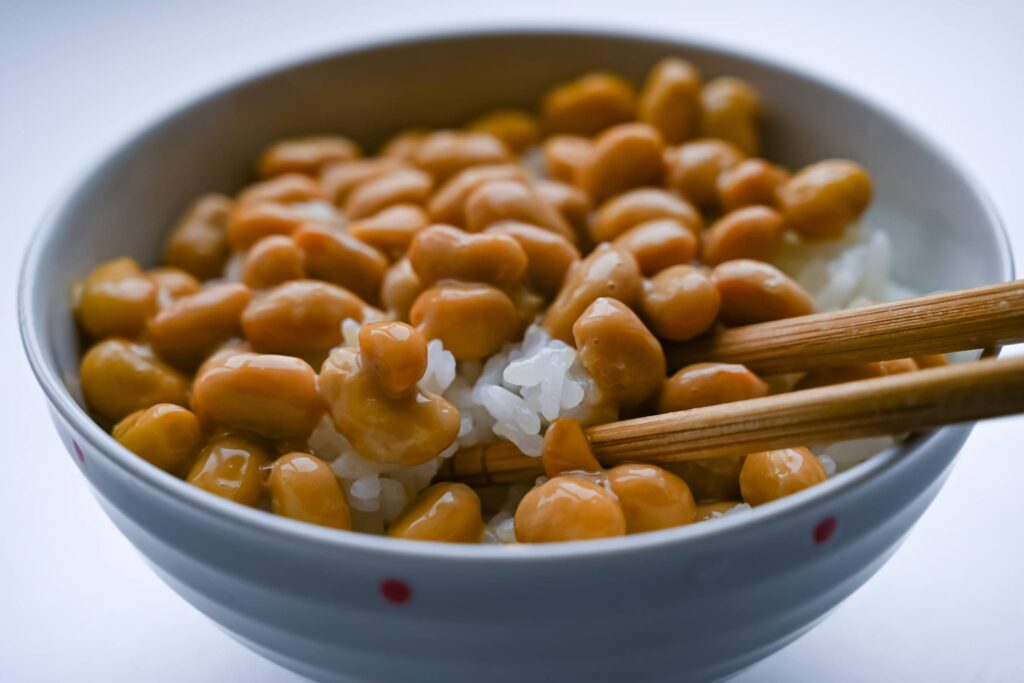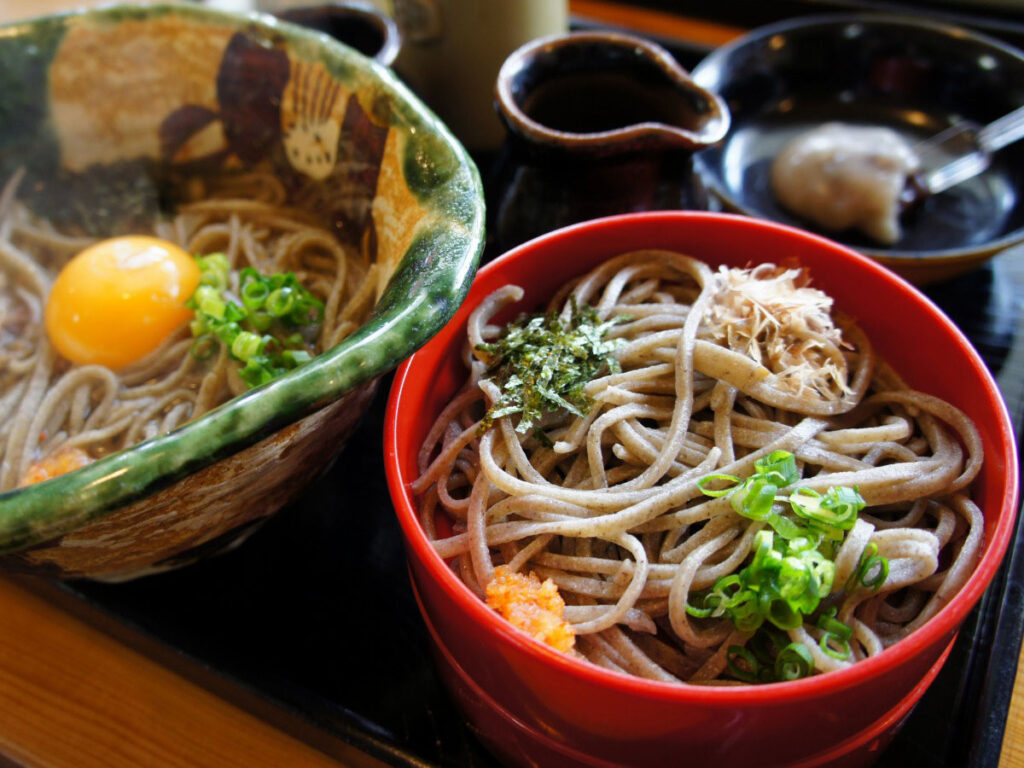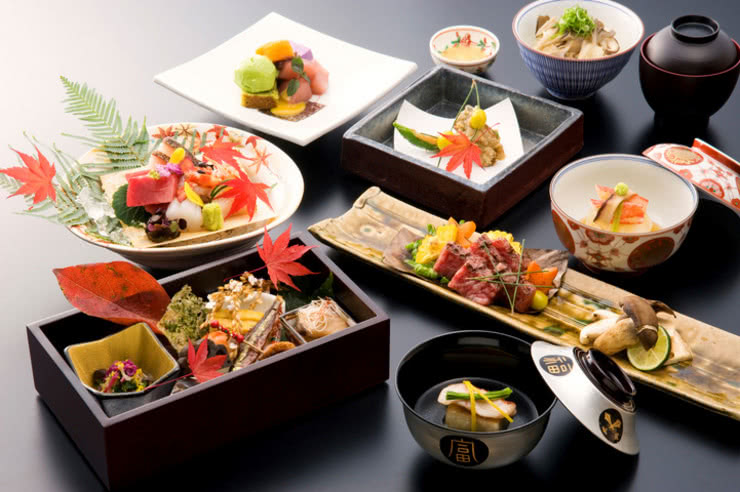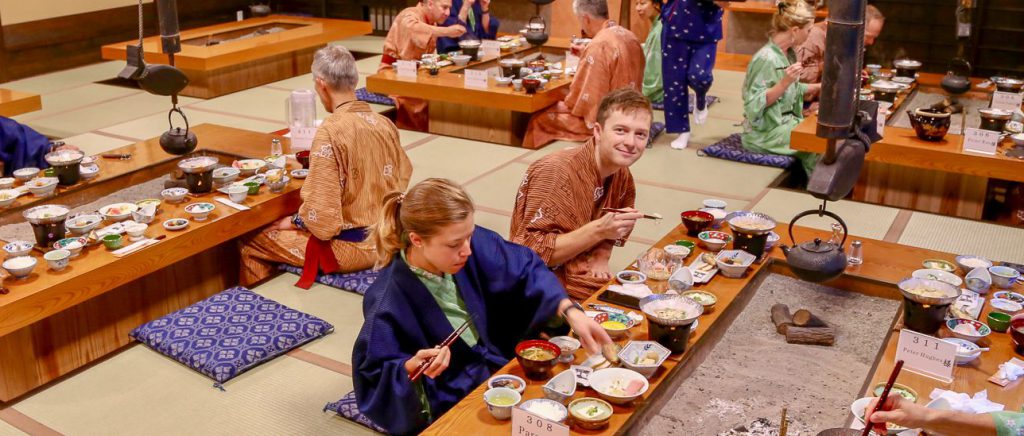A Culinary Overview of the Samurai Tour
Our Samurai Tour covers several regions of Japan, and one of the highlights is the range of culinary offerings. For some of our guests, the dining aspect is the highlight of the entire tour, but for others, it can be slightly discombobulating. The idea behind this overview is to give you a better sense of what to expect on the tour.
Japanese Breakfast
A Japanese breakfast typically includes steamed rice, miso soup, grilled fish, pickled vegetables, nori (seaweed), and tamagoyaki (rolled omelette). Accompaniments like tofu, natto (fermented soybeans), and green tea are common. It is fair to say it is very different to the traditional Western breakfast that most of our guests are familiar with.
Some of our accommodations will also serve coffee and some pastries, but this is more to sate the Western palate than a reflection of what is considered a normal breakfast. Wherever possible, the guides will seek to offer alternatives, but there is a rigidity to the Japanese travel experience on the road less travelled that doesn’t always make this possible. For what it is worth we suggest that everyone at least try ‘natto’ once in their life. Some of the guides actually claim to pine for it post-tour, but that is not something this author can relate to! This BBC article on natto provides a great insight into what they describe as Japan’s most polarising ‘superfood’!

Our Japanese Trip Specialist Eri Nozawa had this to say about breakfast in Japan and natto specifically – “In Japan general, I love my go-to breakfast – Natto and raw egg on top of rice”!! This gives me great energy to get going in the morning, and tasty! It is a very acquired taste, but I love it as I have been eating since I was little. Also, I like Soba noodles, especially when eating cold ones. They have the great flavour of the buckwheat, and each Soba restaurant has a slightly different taste sauce to dip into. And they normally have great selections of Tempra to go with!”
Snacks on Tour
We aim to provide coffee and tea at our rest stops, as well as a range of fruits and sustenance, to energise you for the riding ahead. You’ll also have the opportunity to enjoy the delights of the traditional convenience store experience in Japan. Lawson and 7-Eleven are the main convenience chain options and are cultural phenomena in their own right. Our GM Ben Weigl, who has designed many of the Japanese itineraries, says he often searches out Machi (chewy rice) covered vanilla ice cream balls. He says – “They have been around forever and the packaging hasn’t changed. It is best enjoyed if you can muster some patience as allowing the vanilla ice cream to get a little soft makes them even better – eaten with fingers or a tiny fork.”
Eri and Nate, on the other hand, search out a doughnut hit – “Our favourite snack chain shop is “Mister Donut”!!! Hope you have been before, they have all different kinds of donuts, and some savory things too!”.
Lunch on Samurai
This is your chance to sample a broader range of offerings, which is why we present this as an independent option. The guide team will generally point you in the direction of a favourite noodle bar or similar—and translate as required. Personally, when I’m on the Shikoku stage, I will always try to search for soba noodles for lunch wherever I can find them! You might also prefer to get something on the run and the convenience tours mentioned above offer a really broad and eclectic range of takeaway options. I am generally bamboozled by just how many different pre-packaged food possibilities you can find in these stores. In the context of the elaborate Kaiseki meals that are a feature of many of our dinners, though, we find that guests do appreciate the option to search out more Western-themed options as a way of mixing up the culinary experience on tour.
 Dinnertime
Dinnertime
A huge highlight of the Samurai Tour is the Kaiseki cuisine, which is a feature of many of our dinners on tour. Kaiseki cuisine is a traditional Japanese multi-course meal that emphasizes seasonal ingredients, intricate presentation, and a balance of taste, texture, and appearance. It showcases the chef’s skill and creativity, offering a harmonious dining experience that blends art and flavour, often enjoyed in a serene and elegant setting. Add into the mix some high-quality sake, and it is fair to say many of our guests consider the gastronomy on this tour to rival all the other tours we run combined! We also find that many guests appreciate the opportunity to eat earlier than is generally the case on the European tours we run. As with the breakfasts, though, there is no great flexibility to change these menus beyond us communicating dietary restrictions in advance of the tour. Personally, I suggest throwing caution to the wind and embracing the range of tastes and flavours that are served as a key part of your immersive travel experience. Our guides are always at hand to explain what it actually is that you are being served.
In terms of personal highlights Eri says – “I loved the meal in Oshima Island near Sukumo. They use all the locally sourced ingredients, and my favorite dish in Shikoku “Katsuo no Tataki” was amazing! This is also called “Wara Yaki”(meaning grilled by rice stalk). This charred bonito fish brings extra flavour.”

Special mention as well to the traditional attire that is provided in your rooms that you can wear to dinner – the yukata. The yukata is a casual summer kimono made of lightweight cotton, often worn in Japan during warm months. It’s typically worn at festivals, hot springs (onsen), and ryokan (traditional Japanese inns). Yukatas are designed to be easy to put on and are secured with an obi (sash). Samurai is the tour that arguably gives you the best opportunity to travel light, given the nature of the clothing that most people wear for dinner and, indeed, for the duration of your stay in any of the ryokans we stay in.
And in this respect, I think it would be amiss not to touch on the whole post-ride experience that is a feature of these tours. On arrival at your accommodation, you’ll find vending machines that cater to all sorts of requirements. The cold, crisp Japanese beer is usually my choice. Once in your room, you generally change into your yukata and then head to the onsen, which, like the kaiseki meals, is a feature on many of the evenings on the Samurai tour. Cold beer followed by onsen followed by Kaiseki cuisine is a post-ride ritual I find hard to beat.
